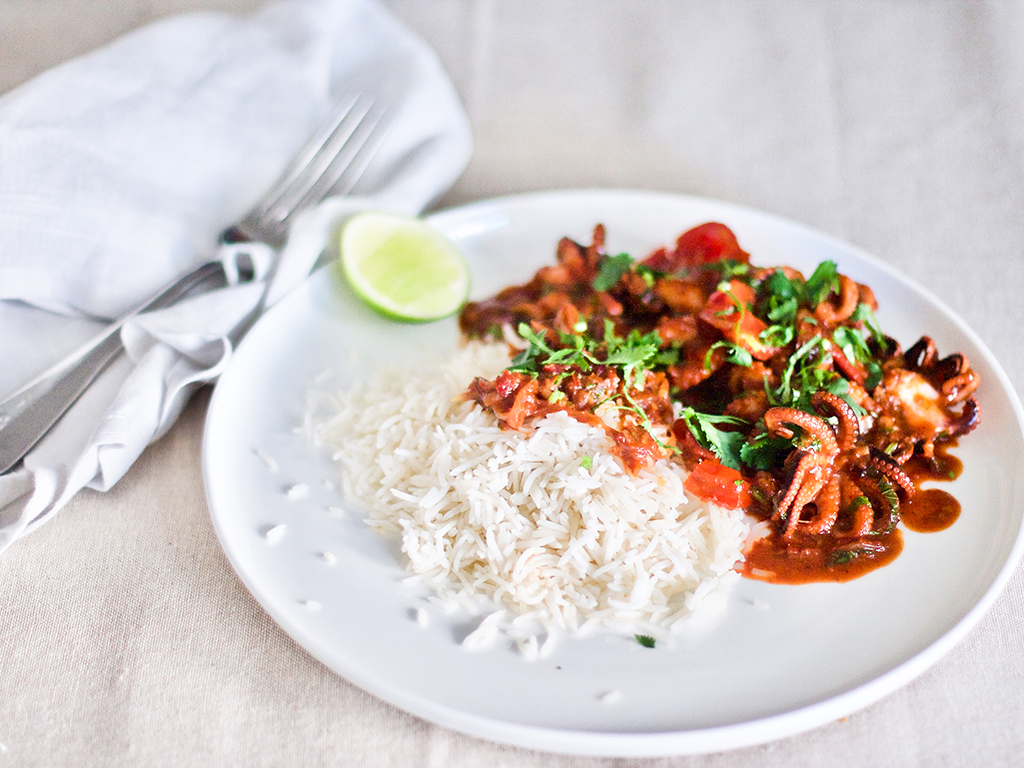
The secret to a great baby octopus sambal is the base. And the base to a good sambal is its balance of sweetness, saltiness and sourness. These 3 tastes will need to harmonise and getting the balance right is crucial. Of course, everything comes down to personal taste. I like my sambals not too sweet and more on the sour side, so I tend to add a little more tamarind water and a squeeze of lime towards the end. But of course, this is up to you. My style of sambal grew through peeking at my mom making hers in the kitchen and watching what she puts inside the pan.
Once you get the base right, you can cook virtually any protein you fancy in your sambal. Here, I used baby octopus. This may not be easily available in Malaysia or parts of Southeast Asia, so I recommend using squid, prawns or even cooked eggs or chicken.
Every weekend, I head to South Melbourne Market and I visit my favourite seafood shop, Aptus. I couldn’t resist when I saw these plump baby octopus and decided to grab them. The tentacles are my favourite part especially when they get slightly crispy after frying. I want to show you how you can be flexible and work with ingredients you have and while being creative when it comes to cooking. Not everything has to be black and white.
I would serve baby octopus sambal as an entree or side dish for a dinner with friends. It works wonderfully with Nasi Lemak or just plain cooked rice and of course some herbs to freshen the whole dish up. A side of ulam is a great match as well.
I hope you enjoy making this as much as I enjoyed eating it after shooting this picture!
Ingredients
- 300g fresh baby octopus/squid
- 2 shallots, roughly chopped
- 2 garlic cloves, peeled
- 4 long red chillies, roughly chopped
- 8 dried chillies, rehydrated in some warm water for at least 15 minutes
- 1 inch shrimp paste (belacan), toasted
- 1 onion, thinly sliced into rings
- 1 tomato, wedged
- 1 tsp tamarind paste, soaked in a cup of warm water
- 1 tbsp sugar
- salt to taste
- oil for frying
- coriander, for garnish
Serves: 2
Method
- Blend the shallots, garlic, chillies and shrimp paste into a paste.
- Heat oil in a frying pan and sauté the paste until the paste separates from the oil.
- Next, add in the octopus and stir well until cooked through (4-6 mins).
- Place in the sliced onions and tomato and cook until soft.
- Add in tamarind juice, sugar and salt to taste. Simmer on low heat until the sambal thickens.
- Serve warm with cooked rice and a wedge of lime. Garnish with some torn coriander leaves.
Check out the links below for more of Diana Chan’s recipes, or read here interview here.
